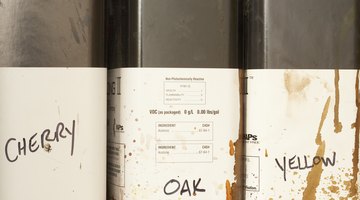The Longest-Lasting Exterior Wood Preservative
Exterior wood is constantly exposed to the damaging forces of nature, including direct sunlight, precipitation and wide fluctuations in temperature.

Clear, film-forming finishes, even those formulated to include protection from the sun's ultraviolet rays, tend to degrade and break down over a period of one to two years. The best preservatives do not sit on the surface, but penetrate the wood fibers to protect the wood from weathering and wear.
Factors Affecting Performance
Naturally occurring factors affect the ability of wood to absorb preservatives evenly and effectively for optimum protection. Each wood species stores its own natural preservative, but only in the heartwood of the tree. Lumber that contains more sapwood than heartwood requires a greater amount of additional treatment with factory-produced preservatives than wood that consists primarily of heartwood. Similarly, wood exposed to moisture tends to swell and inhibit the absorption of the preservatives designed to protect the fibers from damage.
Traditional Wood Preservatives
Traditional wood preservatives contained a solvent that carried water repellents, a binder and mildewcide into the wood fibers. The binder contained a varnish resin or drying substance such as linseed or tung oil. Also present was a waxlike chemical that repelled water. The solvents used included turpentine, naptha or mineral spirits. Until about 1980, all penetrating stains were oil-based, using linseed or other modified oils.
Environmental Concerns
After 1980, wood preservative formulations were modified to exclude solvents or volatile organic compounds, known as VOCs, that reacted with airborne pollutants to produce smog. Solvents became increasingly water-based to meet the provisions of the New Clean Air Act of 1991. Waterborne, water-repellent, wood preservatives were less environmentally hazardous and offered easy water cleanup while maintaining effectiveness, rapid drying and paintability for the user.
What to Look For
All wood preservatives must contain a fungicide that is registered with the Environmental Protection Agency. A wood preservative that is factory pressure-treated is guaranteed for life and does not require subsequent brush-on treatments. Look for a water-based product that contains a fungicide such as penta or cuprinol. For farm use, a nonpaintable preservative containing wax or creosote oil is best. In wet conditions, use a preservative that includes a water repellent. Look for a waterborne preservative containing 3-iodo-2-propynyl butyl carbamate for good, environmentally responsible protection for your exterior wood.
References
Writer Bio
Kevin Ann Reinhart, a retired teacher-librarian, has written professionally since 1976. Reinhart first published in "Writers' Undercover" Cambridge Writers Collective II. She has a bachelor's degree in English and religious studies from the University of Waterloo and a librarian specialist certificate from Queen's University and the University of Toronto.
Photo Credits
- Jupiterimages/Photos.com/Getty Images
- Jupiterimages/Photos.com/Getty Images
More Articles



